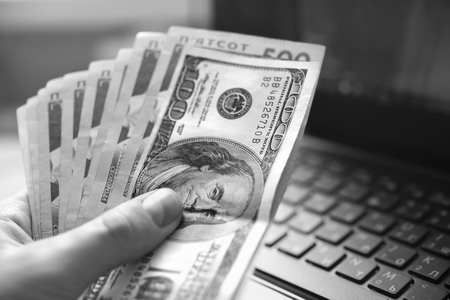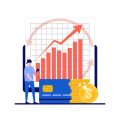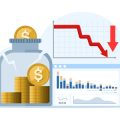Understanding Payday Loans and Their Risks
Payday loans are short-term, high-interest loans typically marketed as a quick fix for urgent cash needs. In the United States, these loans are often accessible to individuals who may not qualify for traditional credit products due to poor credit history or lack of savings. The application process is fast and requires minimal documentation—usually just proof of income and a bank account. But what makes payday loans so dangerous is their structure and cost. The typical payday loan charges an annual percentage rate (APR) between 300% and 600%, sometimes even higher depending on state regulations. Borrowers usually write a post-dated check or authorize an electronic withdrawal for the loan amount plus fees, which is cashed or withdrawn on their next payday.
This setup creates a classic debt trap. Because the repayment is due in full on the borrower’s next paycheck, many people find themselves unable to pay off both the loan and their regular living expenses. As a result, they roll over the loan into a new term—incurring more fees and interest each time. According to data from the Consumer Financial Protection Bureau (CFPB), most payday loan borrowers end up renewing their loan multiple times, paying far more in fees than they originally borrowed. This cycle is why payday loans are considered predatory: they target financially vulnerable Americans and lock them into a loop of high-cost borrowing that can be incredibly difficult to escape.
2. Assessing Your Financial Situation
Breaking free from the payday loan cycle starts with getting a clear picture of where you stand financially. Before you can create an effective debt repayment plan, it’s essential to take stock of all your current obligations and sources of income. This step isn’t just about seeing how much you owe—it’s about understanding your overall financial health so you can make informed decisions moving forward.
Gathering Your Financial Information
Begin by listing out every payday loan, credit card balance, personal loan, and other debts. Include the lender, outstanding balance, interest rate, monthly payment, and due dates. Next, document all sources of income—wages, side gigs, government benefits, or any other regular payments. Finally, track your monthly expenses: housing, utilities, groceries, transportation, insurance premiums, subscriptions, and discretionary spending.
Sample Financial Snapshot Table
| Category | Description | Amount ($) |
|---|---|---|
| Debt | Payday Loan #1 | 500 |
| Debt | Credit Card Balance | 1,200 |
| Income | Monthly Salary (Net) | 2,800 |
| Income | Side Gig Earnings | 400 |
| Expense | Rent/Housing | 900 |
| Expense | Utilities & Bills | 150 |
| Expense | Groceries/Food | 350 |
| Expense | Transportation/Gas | 120 |
| Expense | Other Necessities & Subscriptions | 180 |
A Clear View for Better Decisions
This honest self-assessment provides a foundation for tackling your payday loans and other high-interest debt. By comparing total income against all expenses and debt payments, you’ll see if you’re running at a deficit or surplus each month. If your outflows exceed your inflows, it’s time to identify areas where you can cut costs or boost earnings. Remember: this process isn’t about judgment—it’s about empowering yourself to make strategic moves toward financial stability.
Your Next Steps:
– Create a simple budget using the information above
– Identify urgent debts with the highest interest rates
– Pinpoint unnecessary expenses to eliminate or reduce
– Look for opportunities to increase your monthly income
The more accurate and detailed your financial assessment, the better equipped you’ll be to break free from predatory lending cycles and start building a healthier financial future.

3. Creating a Realistic Budget to Break the Cycle
One of the most effective ways to break free from payday loan debt is by setting up a practical, honest budget. This means taking a hard look at what you earn and where your money goes each month. A realistic budget doesn’t just list numbers—it helps you see the bigger picture, so you can make smarter choices and avoid falling back into high-interest traps.
Start with Your Income
Add up all your sources of income, including your paycheck, side gigs, or any government benefits. Use your net (take-home) pay, not gross. Knowing exactly how much you bring in each month gives you a solid starting point for building your budget.
List Essential Expenses First
Next, write down all your must-pay bills: rent or mortgage, utilities, groceries, insurance, transportation, and minimum debt payments. These are your priorities—your “needs.” If you’re unsure where to start, check your bank statements for recurring charges and bill due dates.
Differentiate Wants from Needs
This is key to breaking the payday loan cycle. “Wants” might include eating out, streaming services, or subscription boxes. Be honest about what’s necessary versus what’s nice to have.
Identify Areas to Cut Back
Once you know your needs and wants, look for places to trim spending. Can you cook at home more often? Cancel unused subscriptions? Carpool or use public transit instead of driving solo? Every dollar saved is a dollar that can go toward paying off debt faster.
Track Every Dollar
Use a notebook, spreadsheet, or budgeting app to track your spending daily. Small leaks—like daily coffee runs or impulse buys—add up quickly. Staying aware helps you stick to your plan and build better habits over time.
Review and Adjust Regularly
Your financial situation will change. Review your budget monthly and adjust as needed—especially if you get a raise, lose income, or pay off a debt. Staying flexible keeps you on track and helps prevent future reliance on payday loans.
A realistic budget isn’t about depriving yourself; it’s about regaining control over your money and breaking the costly cycle of high-interest debt for good.
4. Exploring Safer Alternatives to Payday Loans
Escaping the payday loan trap starts with finding safer, more affordable financial solutions. Unlike payday lenders that charge sky-high interest rates and fees, several alternatives exist that can help you manage emergencies without falling deeper into debt. Here’s a breakdown of some reliable options tailored for Americans looking to break free from the payday loan cycle:
Credit Unions and Community Banks
Credit unions and community banks are not-for-profit institutions that often offer small-dollar loans with much lower interest rates than payday lenders. They tend to be more flexible with their lending criteria, focusing on serving the local community rather than maximizing profit. Many credit unions also offer financial education resources to help you build long-term stability.
Payday Alternative Loans (PALs)
Some federal credit unions offer Payday Alternative Loans (PALs), which are specifically designed to provide short-term cash at much lower costs than traditional payday loans. PALs have capped fees and interest rates, longer repayment terms, and don’t require balloon payments—making them a significantly safer choice.
Comparison Table: Payday Loans vs. Safer Alternatives
| Lender Type | Interest Rate | Loan Amount | Repayment Term |
|---|---|---|---|
| Payday Lender | 300% – 700% APR | $100 – $1,000 | 2 – 4 weeks |
| Credit Union/Community Bank | 6% – 28% APR | $500 – $5,000 | 3 – 24 months |
| Payday Alternative Loan (PAL) | Capped at 28% APR + $20 fee max | $200 – $2,000 | 1 – 12 months |
Local Nonprofits and Charities
If you’re facing a financial emergency, many local nonprofits, faith-based organizations, or social service agencies offer grants, zero-interest loans, or emergency assistance programs. These groups may also connect you to food banks, utility relief programs, or job placement resources to help you regain stability without resorting to predatory lending.
Key Takeaway:
Ditching payday loans means getting proactive about finding support through trustworthy organizations and financial institutions. By exploring these safer alternatives, you can cover urgent expenses while building a stronger financial future—without the burden of high-interest debt.
5. Negotiating and Consolidating Debt
When you’re stuck in the payday loan cycle, taking action to reduce your debt burden is crucial. U.S. consumers have several strategies at their disposal to negotiate better terms and consolidate high-interest debts into more manageable payments.
Start by Negotiating with Lenders
If you’re struggling to keep up with payday loan payments, contact your lender directly. Many payday lenders are willing to work out alternative payment arrangements if you explain your financial hardship. Ask about extended payment plans (EPPs), which let you pay off your balance over time without incurring additional fees or interest. This can help you avoid defaulting while giving you breathing room to get your finances back on track.
Explore Debt Consolidation Options
Debt consolidation is a popular strategy for Americans looking to break free from high-interest cycles. By rolling multiple payday loans or other debts into a single, lower-interest installment loan or personal loan, you simplify your payments and potentially reduce your overall interest costs. Check if you qualify for a debt consolidation loan through your bank, credit union, or online lenders. Personal loans often come with fixed interest rates and predictable monthly payments, making them easier to manage than revolving payday debt.
Consider Credit Counseling Agencies
Non-profit credit counseling agencies in the U.S., such as those accredited by the National Foundation for Credit Counseling (NFCC), can help you negotiate with creditors and set up a debt management plan (DMP). With a DMP, the agency may be able to secure lower interest rates or waive certain fees while consolidating your payments into one monthly bill. These programs are designed to fit your budget and help you pay off debt faster without resorting to bankruptcy.
Know Your Rights Under Federal Law
The Fair Debt Collection Practices Act (FDCPA) protects consumers from abusive collection tactics. If you’re negotiating with collectors, remember that you have rights regarding how and when they can contact you. Don’t hesitate to ask for written agreements and review all terms before signing any new arrangement.
Tackling payday loan debt may feel overwhelming, but by proactively negotiating and considering consolidation options familiar in the U.S., you can regain control of your finances and move toward lasting financial stability.
6. Building Emergency Savings and Long-Term Financial Habits
Breaking free from the payday loan cycle is only part of the journey toward financial stability. The next crucial step is to focus on building an emergency savings fund and establishing smart financial habits that prevent you from falling back into high-interest debt.
Why Emergency Savings Matter
An emergency fund acts as your first line of defense against unexpected expenses—like car repairs, medical bills, or sudden job loss. Without a financial cushion, these emergencies can force you right back into borrowing at sky-high interest rates. Experts recommend starting with a goal of $500 to $1,000 in a basic savings account, then gradually working up to cover three to six months’ worth of living expenses.
Steps to Start Your Emergency Fund
- Automate Your Savings: Set up automatic transfers from your checking to your savings account every payday—even if it’s just $10 or $20 at first.
- Cut Non-Essential Spending: Review your monthly expenses and identify areas where you can temporarily cut back—like dining out or subscription services—to free up cash for savings.
- Use Windfalls Wisely: Tax refunds, bonuses, or stimulus checks are great opportunities to boost your emergency fund quickly.
Cultivating Long-Term Financial Habits
Avoiding future high-interest debt means developing habits that support ongoing financial health. This includes creating—and sticking to—a realistic budget, tracking spending regularly, and prioritizing needs over wants. Consider using budgeting apps or spreadsheets to monitor where your money goes each month.
The Power of Consistency
Building strong financial habits doesn’t happen overnight. Small, consistent actions—like saving a little each week and reviewing your finances monthly—add up over time. As you grow your emergency fund and reinforce positive money habits, you’ll gain confidence and resilience against future financial shocks. Ultimately, these steps help ensure that payday loans become a thing of the past—and that your financial future is brighter and more secure.


